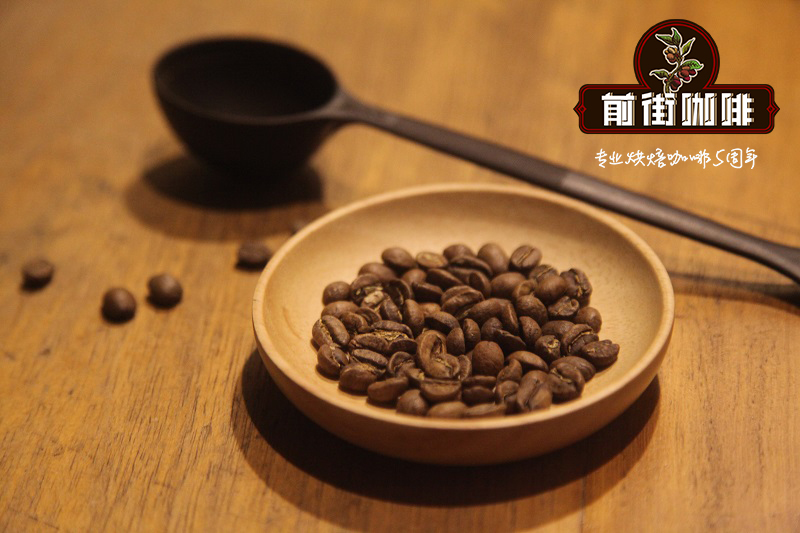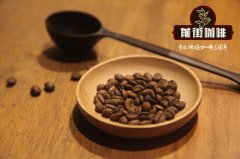Coffee and bean honey treatment grading Costa Rican honey to deal with the wisdom of coffee working people

Professional coffee knowledge exchange more coffee bean information please follow the coffee workshop (Wechat official account cafe_style)
Introduction to Qianjie-Costa Rican honey treatment
Costa Rica is located in Latin America. Coffee is Costa Rica's main agricultural product and an important source of economy, with a yield of 1700 kg per hectare and an annual output of more than 2 million bags (60KG per bag). Coffee exports account for 25% of Costa Rica's total exports. Across the country, 1max 3 of the population is invested in coffee-related industries. The main producing area is in Tarazhu. it is one of the important coffee growers in Costa Rica and one of the major coffee growers in the world.
In 1729, Costa Rica introduced coffee from Cuba, mainly Kaddura and Kadoue. And Costa Rica's national law allows only Arabica coffee to be planted in the country (the other is Robusta, where Arabica beans are of better quality), which is very rare in coffee plantations all over the world. it shows that the quality of coffee is paid full attention to.
The treatment method of Costa Rica is also different from that of other countries, and honey treatment is mainly used throughout the country. What is honey treatment?
The coffee bean is the core of the coffee fruit, the outermost layer of the fruit is the peel, under the skin is the pulp, and under the pulp is pectin, which is a thick gelatinous layer that tightly wraps the coffee beans. because this layer of mucous membrane is sticky and the powdered sugar is extremely high, it is called "honey" by people.
Honey treatment refers to the process of making raw beans with mucous membrane for sun drying, which is between the sun treatment (whole fruit drying) and water washing (decomposing the colloid with water). This treatment keeps the water clean, although the brightness decreases, but the sweetness of coffee has been increased.
There is also a hierarchical distinction in honey treatment:
Yellow honey treatment: retain 20% of 50% pectin, dry with light, last for about 8 days, so that the moisture content reaches a stable value.
Red honey treatment: retain more than 50% of the pectin, longer drying time, reduce the direct exposure time of light, will be used in the sunshade, lasting about two weeks.
Black honey treatment: retain more than 80% pectin, about 2-3 weeks to dry dehydration, use sunshade, prevent drying too fast, so that coffee more fully absorb pectin converted sugar.
Why do other countries seldom use honey treatment? apart from the fact that the process is vulnerable to pollution and mildew, it needs to be closely watched throughout the process and constantly flipped over to avoid bad fermentation flavor, but also depends on the local weather and climate. The weather must be dry and sunny, otherwise it is not suitable for honey treatment. Costa Rica's climate is dry for half a year, which happens to be dry during the coffee harvest season. Therefore, coffee farmers summed up the development of honey treatment methods, thanks to the intelligent working people.
In short: Qianjie is a coffee research hall, happy to share the knowledge about coffee with you, we share unreservedly just to make more friends fall in love with coffee, and there will be three low-discount coffee activities every month. The reason is that Qianjie wants to make more friends drink the best coffee at the lowest price, which has been Qianjie's tenet for 6 years!
END
Important Notice :
前街咖啡 FrontStreet Coffee has moved to new addredd:
FrontStreet Coffee Address: 315,Donghua East Road,GuangZhou
Tel:020 38364473
- Prev

Costa Rican Coffee Brand recommends musician Series Coffee Mozart can't be missed
Professional coffee knowledge exchange more coffee bean information please follow the coffee workshop (Wechat official account cafe_style) front street-Costa Rican musicians series Mozart introduced Costa Rica Tara Ju Canette Manor musicians series raisin honey treatment Mozart Costa Rica Tarrazu Finca Canet Rasin Honey Process Mozart flowers, strawberries Swiss sugar
- Next

Is Costa Rican Coffee good? musician Series Coffee Beethoven is sour and sweet
Professional coffee knowledge exchange more coffee bean information please follow the coffee workshop (Wechat official account cafe_style) front street-Costa Rican musician series Beethoven introduced Costa Rican coffee is famous for its purity and sweetness, TARRAZU producing area is widely praised for its quality, most of the coffee from this area belongs to high grade. This time the coffee is made at an altitude of 1900.
Related
- Beginners will see the "Coffee pull flower" guide!
- What is the difference between ice blog purified milk and ordinary milk coffee?
- Why is the Philippines the largest producer of crops in Liberia?
- For coffee extraction, should the fine powder be retained?
- How does extracted espresso fill pressed powder? How much strength does it take to press the powder?
- How to make jasmine cold extract coffee? Is the jasmine + latte good?
- Will this little toy really make the coffee taste better? How does Lily Drip affect coffee extraction?
- Will the action of slapping the filter cup also affect coffee extraction?
- What's the difference between powder-to-water ratio and powder-to-liquid ratio?
- What is the Ethiopian local species? What does it have to do with Heirloom native species?

